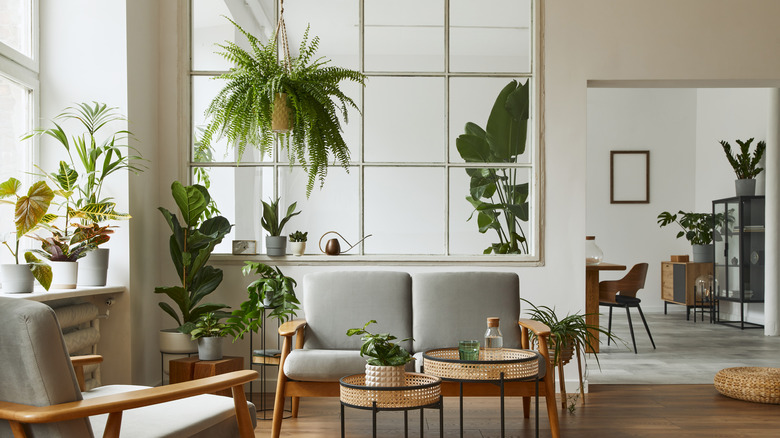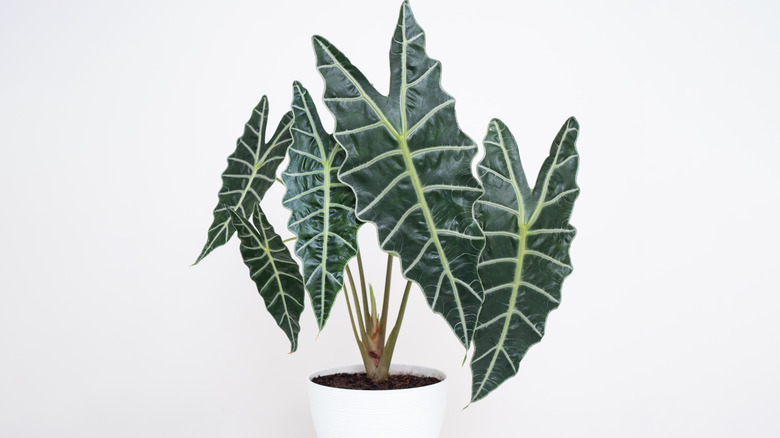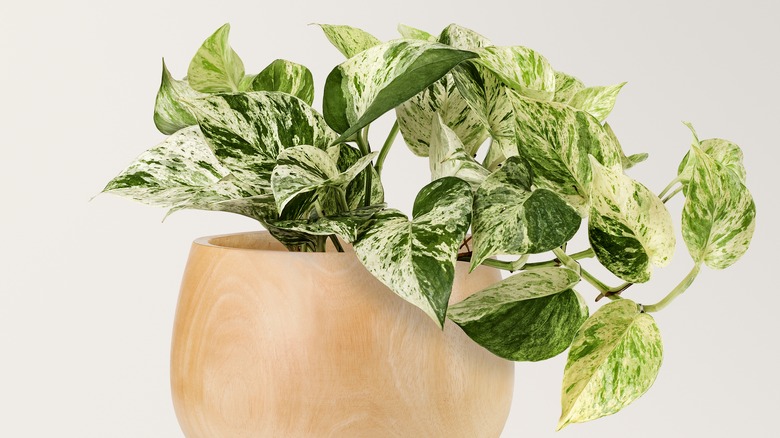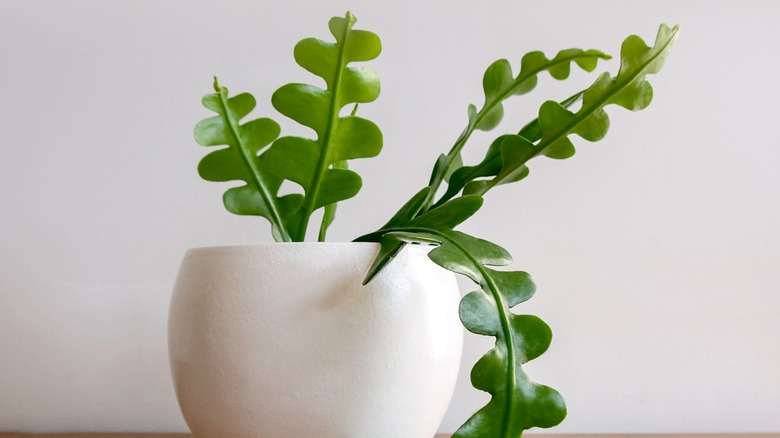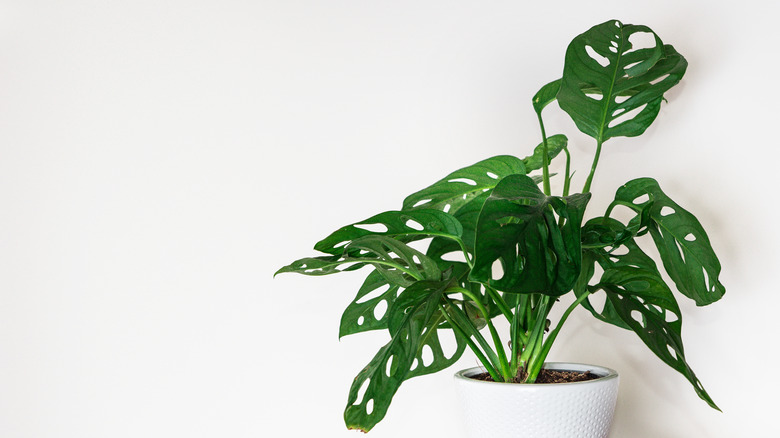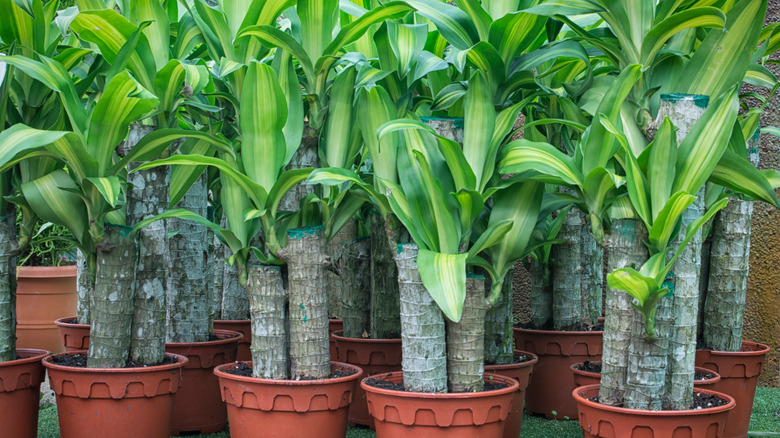House Digest's Indoor Plants Of The Year For 2023
Can a house really be a home without houseplants? On nearly every movie set and in every perfect domestic inspiration post on Instagram, there is greenery. There are even fan websites and Facebook groups specifically dedicated to growing houseplants. So, what makes us so obsessed with them? Well, there are many reasons: Houseplants add beauty to our homes, help us feel more at ease, and remove harmful chemicals from the air.
With so many different shapes and sizes there truly is something for any space. Whether you like the sweet cottage look of African violets or the low-maintenance simplicity of sansevierias, your home is undoubtedly more comfortable and hospitable with greenery.
While we firmly believe there are no wrong houseplants, there are some varieties that have become increasingly popular this year. To that end, if you like rare, high-maintenance specialty plants or simple, low-maintenance varieties, we've got you covered. Let's start with the most popular House Digest plant of 2023.
Indoor plant of 2023: Alocasia polly
The Alocasia polly (Alocasia x amazonica 'Polly') was developed in the 1950s by a Florida breeder from plants native to the Philippines, China, and Southeast Asia. Although this cultivar has been around for decades, it has recently gained popularity among houseplant enthusiasts. At maturity, the Alocasia polly only grows up to 2 feet tall, making it a good option for window sills, bookcases, or anywhere you have a little space. Although it may not be very large, its stunning foliage makes it a true eye-catcher. The gently lobed leaves are dark green, featuring a stark contrast of white or light green veins. Some exceptionally rare varieties offer some variegation.
Since Alocasias come from tropical regions, they need a similar indoor environment to thrive; they grow best in bright, indirect light in a space with around 70% humidity. A small humidifier or pebble tray can help provide the necessary moisture in the air to keep your plant happy. Keep the soil consistently moist, but not soggy, and grow your Alocasia polly in a planter with good drainage.
First runner-up: Marble queen pothos
Pothos, also known as devil's ivy, is a popular option you can find anywhere from plant nurseries to supermarkets. You might see the most common variety, golden pothos (Epipremnum aureum) in your doctor's office or restaurants because they are so easy to grow and require very few special environmental conditions. While the golden pothos is a wonderful plant, its cousin, the Marble Queen (Epipremnum aureum 'Marble Queen) really shines. This variety features streaks of light green and white variegation, giving it a beautifully bright visual texture.
Although pothos can grow well in low-light conditions, you will get the most variegation for your Marble Queen near bright, indirect light. This cultivar is perfect for those who want a houseplant that makes a big statement with minimal maintenance. Pothos varieties do not require extra humidity or special care. Just give it good soil in a planter with drainage and water when the surface is dry or when you see the leaves start to droop.
Second runner-up: Fishbone cactus
If you are looking for something truly unique, check out the fishbone cactus (Epiphyllum anguliger). The zig-zag-shaped stems of this cactus bear a slight resemblance to its namesake, but it is also called the ric rac cactus — after a decorative element used in sewing — and the zig-zag cactus (for obvious reasons.) The fascinating foliage of this plant makes it a true stunner, but in the right conditions, the fishbone cactus produces breathtaking blooms. Although it is technically a cactus, you do not have to worry about getting poked -– this plant is spike-free. Because the stems can grow several feet long, this greenery looks great in a hanging planter.
The fishbone cactus is relatively low-maintenance. It grows best in moderate indirect light and prefers a well-draining potting mix. Since this is a tropical cactus, it prefers consistently moist soil and does not require a mix made specifically for succulents and cacti. Water about once a week or whenever the planting medium is dry 1 inch below the surface.
Third runner-up: Swiss cheese plant
Swiss cheese plants (Monstera adansonii) are not exactly new or unusual, but monsteras are definitely having a moment right now. The swiss cheese plant is a consistent favorite among collectors because of its vining growth habit and unique leaves that feature holes like swiss cheese. Note: Sometimes common names get confusing. You may know this plant's much larger cousin, the Monstera deliciosa, as the swiss cheese plant; both options are fabulous.
Since the swiss cheese plant grows as a vine, it will need a small trellis. Moss poles are an excellent option because your monstera can use its aerial roots to climb, making for very attractive vertical growth. If you want to let it grow free, you can let several vines adorn a hanging planter.
Like most tropical plants, this cultivar prefers bright, indirect light and consistently moist soil. Like the Alocasia, it will grow best in an environment with moderate to high humidity.
Forth runner-up: Corn plant
Oh, the humble corn plant (Dracaena fragrans). What is it doing on this list? It is certainly not rare or difficult to purchase. In fact, you can find a corn plant in almost any garden center at any time of the year, but we think that's just one reason why it's so fabulous! For a bargain price, you can get a 4-foot tall option with beautifully variegated stripes that will grow in almost any indoor conditions with minimal maintenance. If it deserves any title, the corn plant has earned the most underrated pick of the decade.
Although they will grow more quickly in moderate light conditions, corn plants will tolerate low light well. They are perfect for darker corners of your house that need life and texture. The only light they do not tolerate is direct sunlight because these understory plants scorch easily. Place your corn plant in a container with good drainage using high-quality potting soil. Allow the soil to dry between waterings.
